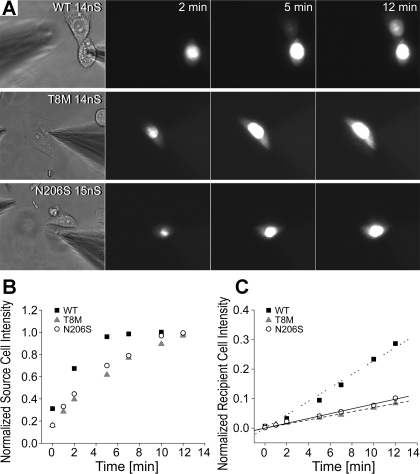Fig. 6.
Permeability of wild-type and mutant channels to ethidium bromide (EtBr). EtBr transfer through cells expressing the wild-type and mutant channels was compared between pairs with similar junctional conductance. A: examples of epifluorescent micrographs (taken at 2, 5, and 12 min) of cell pairs expressing wild-type, T8M and N206S proteins during EtBr flux experiments. Transfer of EtBr through wild-type Cx26 channels was readily observed after the opening of the patch seal in the source cell, as seen by the increased intensity of the recipient cell. There was little visible fluorescent intensity in the recipient cells coupled by T8M and N206S channels. B: normalized fluorescent intensities of source cells expressing wild-type, T8M, and N206S Cx26 in A were plotted as a function of time (minutes) to show dye injection into the cells. C: fluorescent intensity of the recipient cells was increased over time. Both the T8M and N206S mutant channels had greatly reduced permeability relative to wild-type channels.

